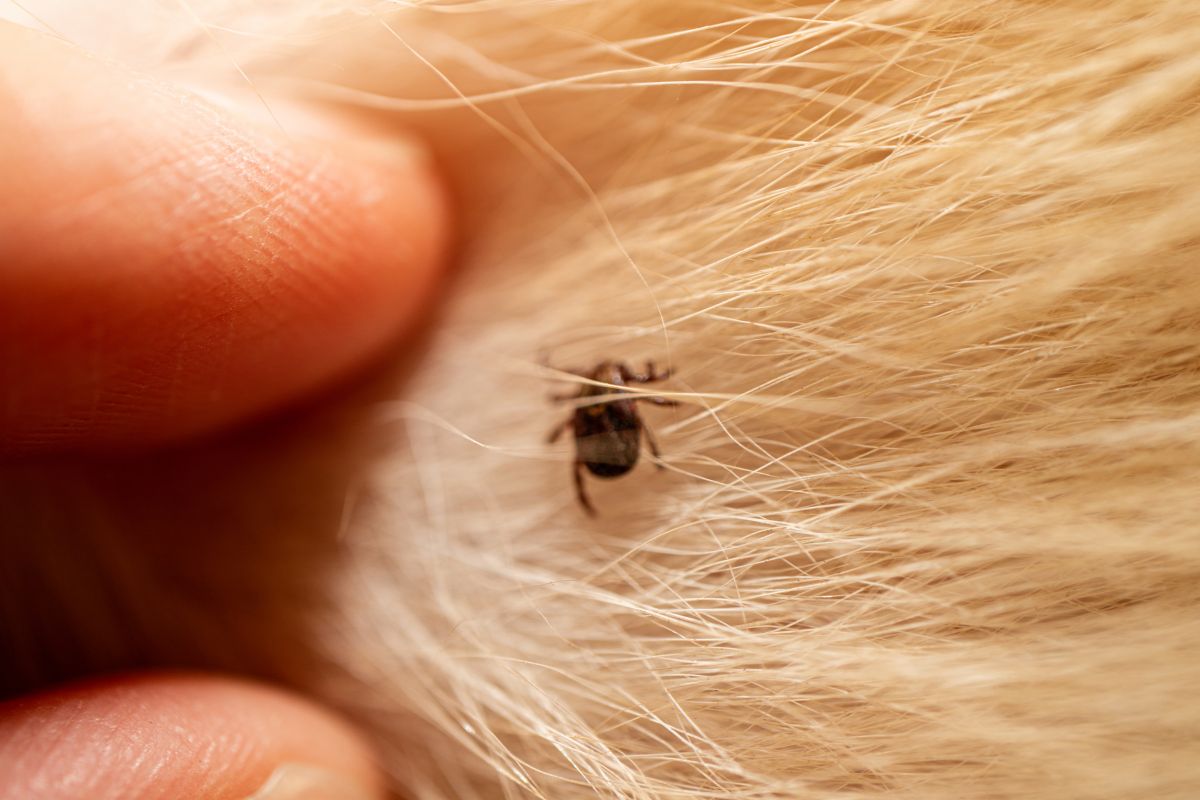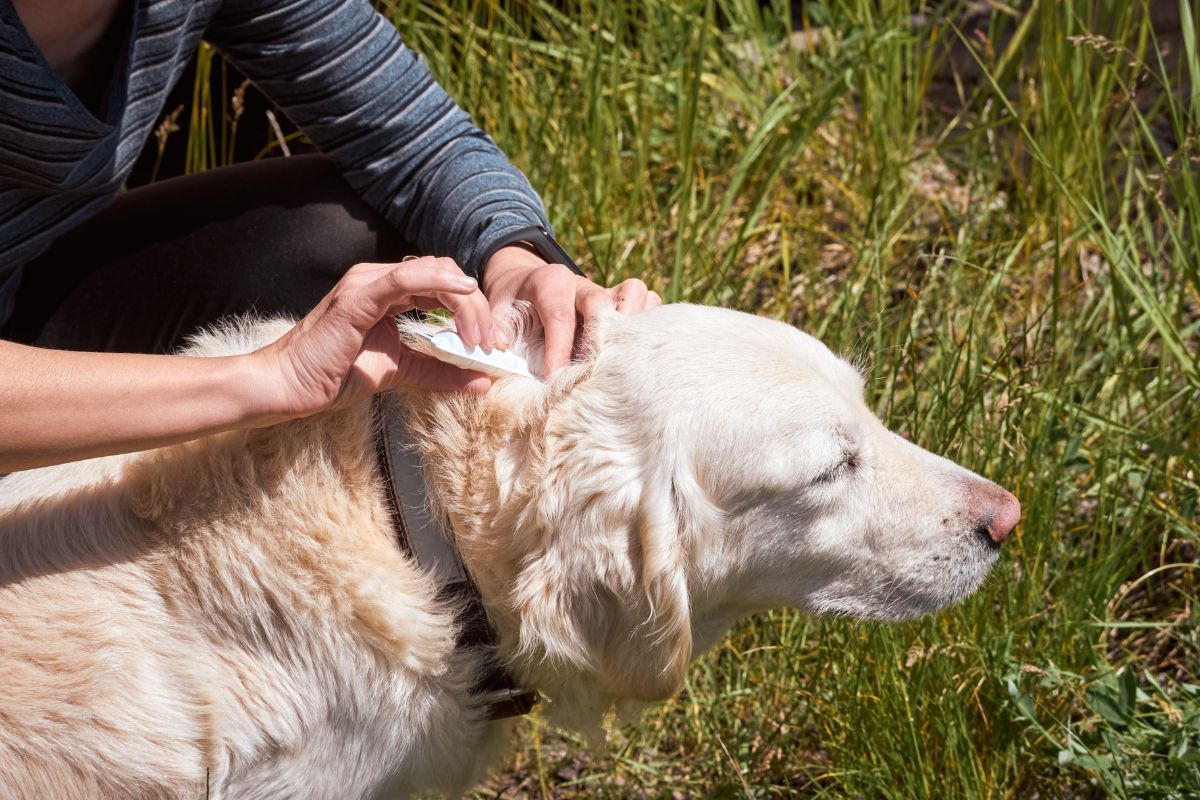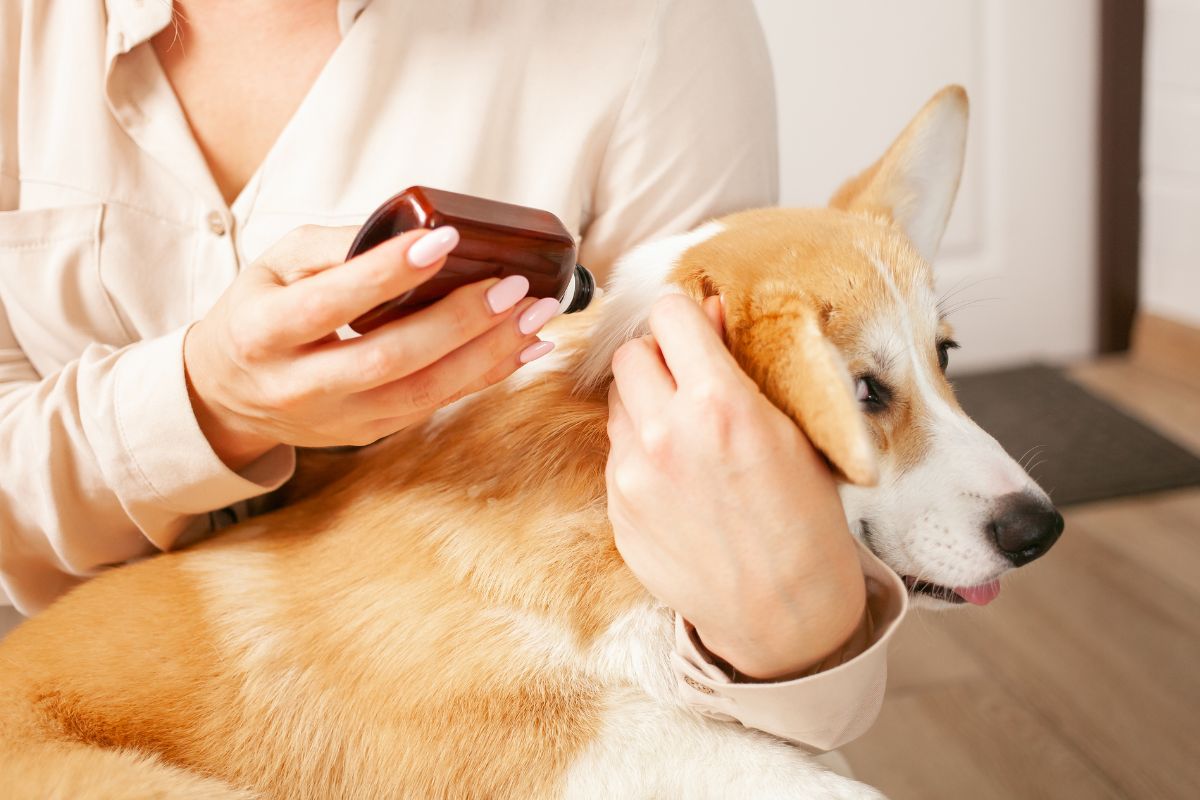Ticks on dogs are not just a minor inconvenience; they can become a major concern for pet parents. These tiny, blood-thirsty parasites, known as ticks on dogs, not only cause discomfort but also pose a potential threat to your furry companion’s health. Fortunately, with the right knowledge and the use of effective tick treatment for dogs, you can protect your four-legged friend from these troublesome pests.
In this comprehensive guide, we will explore everything you need to know about ticks on dogs and effective tick treatment for dogs.
Understanding Ticks
Before we dive into the methods of tick removal and prevention, let’s first understand what ticks are and why they pose a problem for your dog.
What Are Ticks?
Ticks on dogs are not your ordinary pests. These small arachnids are related to spiders and scorpions, and they have a particular affinity for attaching themselves to your dog’s skin. These external parasites, commonly referred to as ticks on dogs, feed on the blood of mammals, including your beloved pet.
Why Are Ticks Dangerous for Dogs?
These tiny creatures can be vectors for various diseases that can harm your dog’s health. This is why understanding ticks on dogs is crucial. Ticks can transmit diseases such as Lyme disease and Rocky Mountain spotted fever, posing a serious health risk to your furry family member.
Identifying Ticks on Dogs
The first step in addressing a tick infestation is to identify the presence of ticks on your dog.
Signs of Tick Infestation
Detecting ticks on dogs early is crucial for effective tick treatment for dogs. Here are some telltale signs that your dog may be dealing with a tick infestation:
Excessive Scratching or Licking: If you notice your dog frequently scratching or licking a particular area, especially around the ears, neck, or paws, it could be a sign of ticks on dogs. These tiny pests can cause itching and discomfort.
Visible Ticks on the Skin: Sometimes, ticks on dogs can be visible to the naked eye. Early detection is key to effective tick treatment for dogs.
Skin Redness or Inflammation: If you observe redness or inflammation around certain areas of your dog’s skin, it could be due to tick bites. These reactions can indicate the presence of ticks in dogs.
Where to Look for Ticks
Ticks often seek out areas with thinner fur and easier access to the skin. Here are the key spots to inspect for ticks on dogs.
Ears: The ears are a common hiding spot for ticks on dogs. Lift your dog’s ears and carefully examine both the inside and outside surfaces.
Neck: The neck is another favored location for ticks on dogs. Gently part the fur and look closely for any signs of ticks.
Between the Toes: Don’t forget to check between your dog’s toes. Ticks can hide in the spaces between the digits.
Safe Tick Removal
Now that you’ve identified ticks on your dog, it’s essential to remove them safely and effectively.
Tools for Tick Removal
Fine-Tipped Tweezers: Precise, fine-tipped tweezers are the most commonly recommended tool for tick removal. They allow for a firm grip and minimize the risk of leaving behind any tick parts.
Tick Removal Hook or Spoon: Tick removal hooks or spoons are designed specifically for this purpose. They can make the process more straightforward and reduce the chances of accidentally squeezing the tick.
Gloves: Wearing gloves is essential during the tick removal process to protect yourself from potential pathogens carried by ticks on dogs.
Step-by-Step Tick Removal
Follow these steps for safe and effective tick removal from your dog:
Put on Gloves: Start by wearing gloves to protect yourself from any potential disease transmission.
Grasp the Tick: Using fine-tipped tweezers, carefully grasp the tick as close to your dog’s skin as possible. This minimizes the risk of breaking the tick and leaving parts behind.
Pull Gently: With a steady, even pressure, pull the tick upward. Avoid twisting or jerking motions, as this can cause the tick to break.
Dispose of the Tick: Once you’ve successfully removed the tick, place it in a container with rubbing alcohol to ensure it’s dead. This is a crucial step to prevent the tick from reattaching or spreading diseases.
Clean the Area: After removing the tick, clean the bite area and your hands with antiseptic to prevent infection.
Do’s and Don’ts
- Do not use your fingers to remove ticks.
- Do not crush or squeeze the tick during removal.
- Do not use remedies like alcohol or a hot match to remove ticks, as they can harm your dog.
Tick Treatment for Dogs
Aside from manual removal, there are various tick treatment options available for dogs.
Topical Tick Preventatives
One of the most common and effective ways to prevent and treat ticks on dogs is through the use of topical tick preventatives. These products are applied directly to your dog’s skin, providing ongoing protection against ticks.
Spot-on Treatments: Spot-on treatments are liquid formulations that you apply to specific areas of your dog’s skin, typically between the shoulder blades. These products repel ticks and kill them upon contact. They are easy to use and offer long-lasting protection.
Tick Collars: Tick collars are another option for tick treatment for dogs. These collars contain tick-repelling chemicals that are released slowly over time, creating a protective barrier around your dog. Be sure to follow the manufacturer’s instructions for proper use.
Oral Medications
Chewable Tablets: Chewable tablets, often prescribed by veterinarians, are easy to administer and are highly effective in preventing and treating ticks on dogs. They work by inhibiting tick attachment and can protect for several weeks.
Tick Shampoos and Dips
Specialized Shampoos: Tick shampoos contain ingredients that are toxic to ticks, and they can be used during your dog’s bath time to kill and remove ticks. Follow the instructions on the product label for best results.
Preventing Tick Infestations
Prevention is key to keeping your dog tick-free. Here are some tips to help prevent tick infestations.
Keep Your Yard Tidy
A clean and well-maintained yard can significantly reduce the risk of ticks on dogs.
Regularly Mow the Grass: Keeping your lawn short reduces tick habitat, making it less inviting for these parasites.
Trim Shrubs and Bushes: Prune overgrown shrubs and bushes to minimize hiding spots for ticks.
Create a Barrier: Consider creating a barrier like gravel or wood chips between your lawn and wooded areas to reduce tick migration
Use Tick Control Products
For added protection against ticks on dogs, consider using tick control products designed for outdoor use in your yard. These products can help reduce the tick population in your outdoor space.
Check Your Dog After Outdoor Activities
After outdoor adventures, whether it’s a walk in the park or a hike in the woods, it’s crucial to inspect your dog for “ticks on dogs.” Follow these steps:
Thoroughly Check Your Dog: Examine your dog’s entire body, paying close attention to the ears, neck, and between the toes.
Use a Tick Comb: A tick comb can be a handy tool for detecting and removing ticks from your dog’s fur.
Consult Your Veterinarian
Discuss Tick Preventatives: Talk to your veterinarian about topical treatments, oral medications, or other “tick treatment for dogs” options that are best suited for your pet.
Vaccination: In some regions, specific tick-borne disease vaccines may be recommended. Consult with your vet to determine if these vaccines are necessary for your dog.
Natural Tick Remedies
For those who prefer natural alternatives when dealing with “ticks on dogs,” there are some remedies that may help repel ticks.
Essential Oils
Certain essential oils are known for their tick-repelling properties and can be used in diluted form on your dog. Common essential oils include:
- Cedarwood Oil
- Eucalyptus Oil
- Lavender Oil
- Peppermint Oil
When using essential oils for ticks on dogs, remember the following:
Dilution: Always dilute essential oils with a carrier oil, such as coconut oil, before applying them to your dog’s fur. Consult your vet for proper dilution ratios.
Spot Testing: Before applying any essential oil mixture, perform a spot test on a small area of your dog’s skin to ensure there’s no adverse reaction.
Consult Your Vet: Talk to your veterinarian before using essential oils to address ticks on dogs. They can guide safe usage.
Neem Oil
Neem oil is a natural remedy known for its insect-repelling properties. It can be applied to your dog’s skin or fur to deter ticks on dogs.
Dilution: Always dilute neem oil with a carrier oil before applying it to your dog.
Consult Your Vet: Seek your veterinarian’s advice before using neem oil to address ticks on dogs.
In conclusion, ticks on dogs can be a significant concern for pet parents, but with the right knowledge and precautions, you can protect your furry friend. Regular tick checks, safe removal, tick treatment for dogs, and prevention measures are essential steps to ensure your dog’s health and well-being. Remember, your pet’s health is a top priority, and a tick-free dog is a happier dog.
By following the advice in this comprehensive guide, you can effectively manage tick infestations and keep your dog healthy and tick-free.











